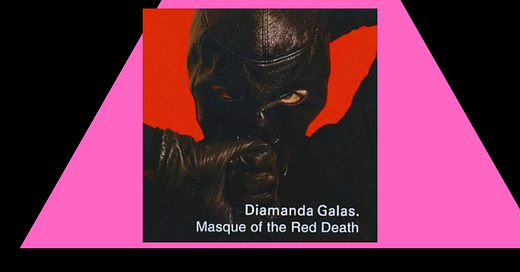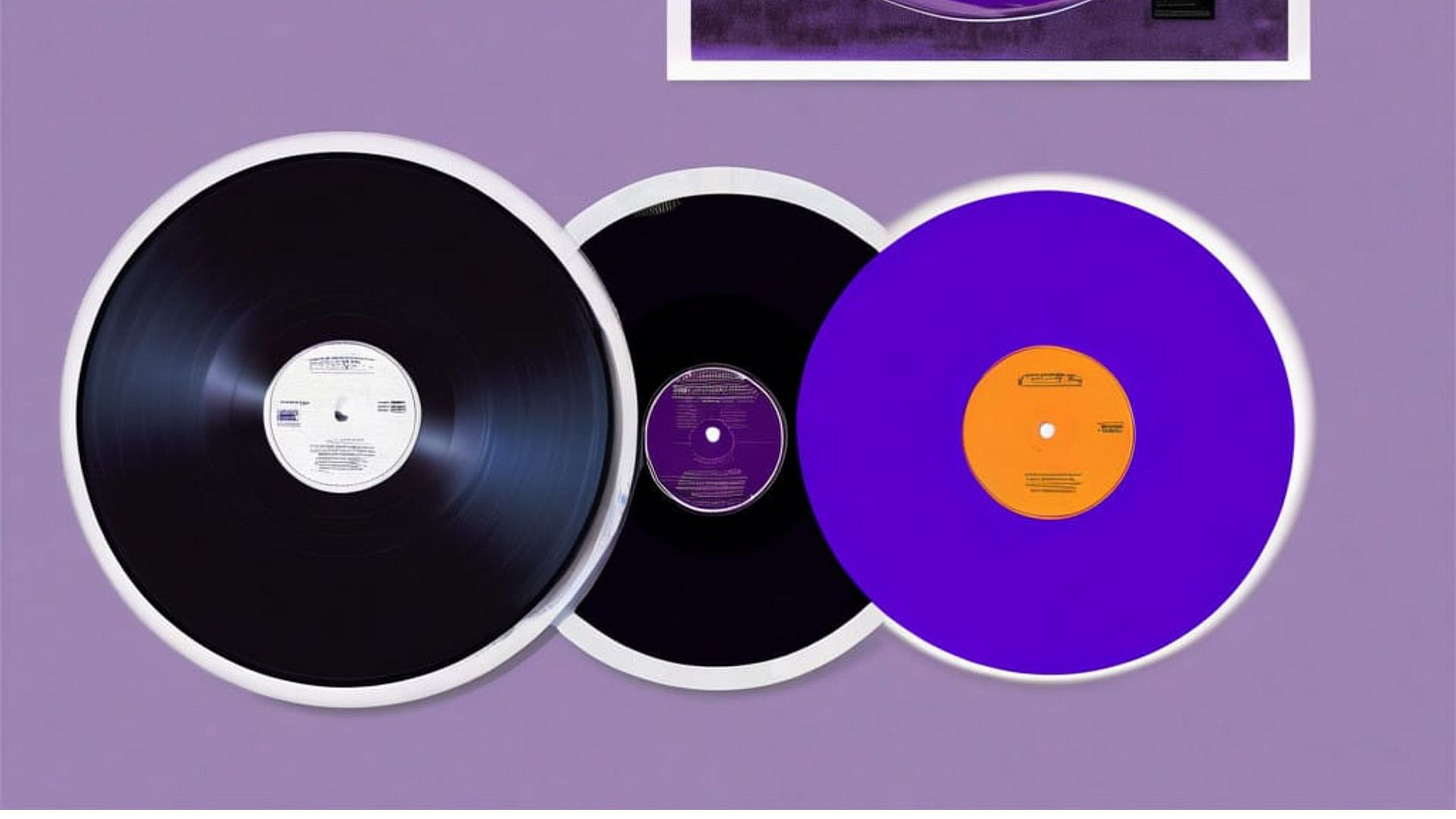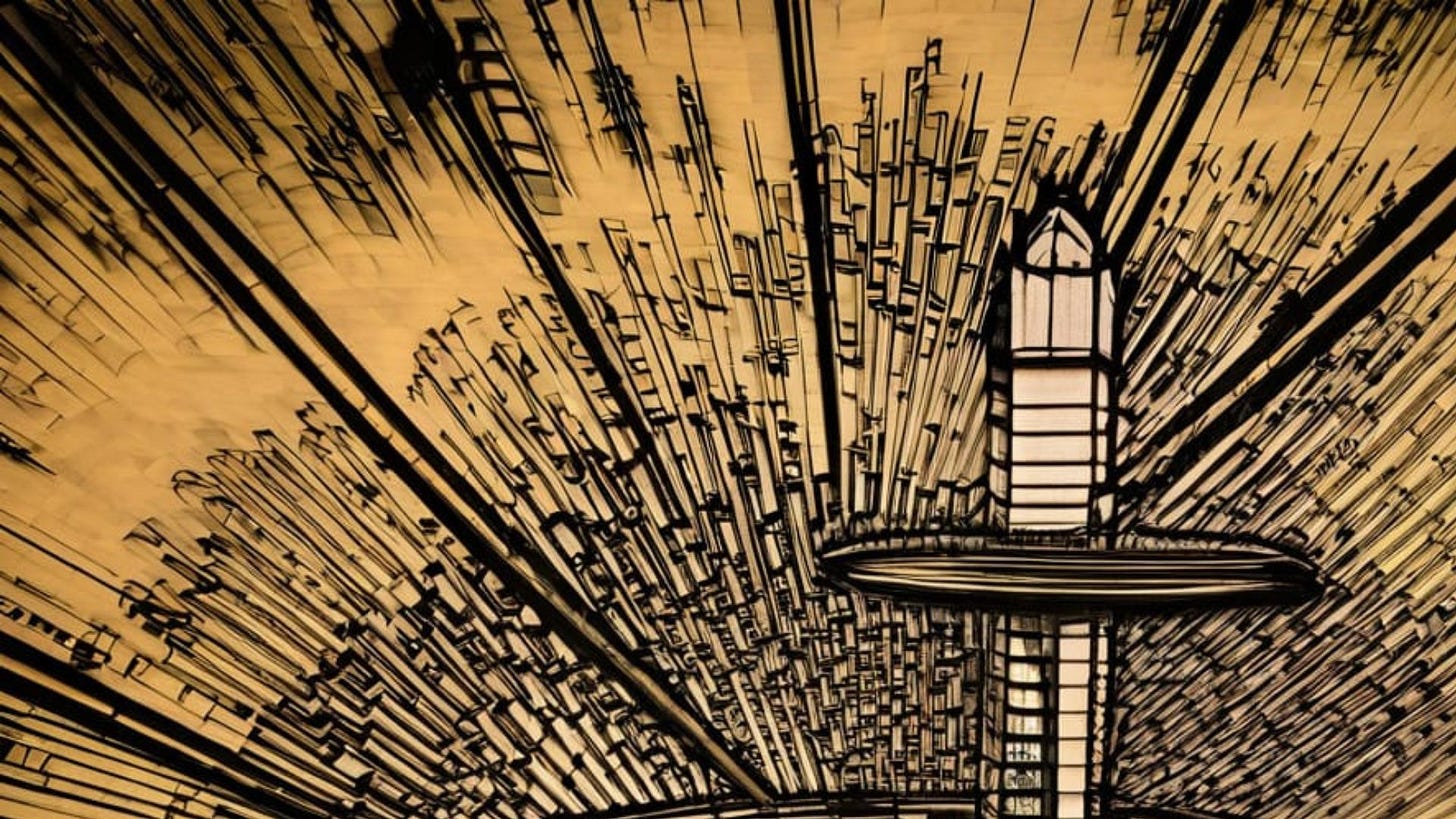How Diamanda Galás’ Trilogy Became a Sonic Monument to the AIDS Crisis
Masque of Red Death as a critique of institutional indifference
Most of the time, anoixe will focus on experimental music (which can be solitary because of divergent, challenging soundscapes) and its home in similarly solitary online spaces, particularly Reddit. Right now, however, we’re at a crucial point in history, and it is prudent to delve into how politics shape culture—especially in the avant-garde sphere. This brings me to the music of Diamanda Galás, an artist I’ve interviewed and deeply admire, and the intersection of art and society.
January 20 marks Inauguration Day in the United States, a moment often associated with significant political, cultural, and public health shifts. These transitions frequently set the stage for both renewal and upheaval. 1980 ushered in one such moment, with the Reagan administration’s ascension coinciding with a devastating public health crisis: the emergence of the AIDS epidemic. This historical convergence serves as a lens through which to understand the artistry of Diamanda Galás’ Masque of Red Death trilogy.
Through three groundbreaking albums, Galás crafted a harrowing yet poignant musical exploration of grief, rage, and resistance. Her trilogy remains a way for understanding how avant-garde music can help you process collective trauma. With this historic day here, I want to delve into the history of the AIDS epidemic, Galás' art, and the enduring impact of the Masque of Red Death.
The 1980s: A Decade of Political and Public Health Upheaval
The early 1980s were defined by significant ideological shifts in the United States. President Jimmy Carter, who died Dec. 29, 2024 at age 100, lost his reelection bid. Ronald Reagan’s presidency heralded the rise of the New Right and the Moral Majority, a coalition of groups that sought to reshape societal norms by targeting liberalism that had flourished in the 1970s. At the same time, the then-mysterious AIDS epidemic emerged. It was initially stigmatized as a "gay plague" by public health officials and the media. This framing isolated the most vulnerable communities—gay men, intravenous drug users, and other groups—and fostered what many activists felt was inaction from institutions.
Indifference and the AIDS Crisis
When AIDS first appeared, it lacked a clear medical definition. Early cases were labeled as Gay-Related Immune Deficiency, embedding stigma into the disease's narrative. AIDS was met with apathy from many quarters. Reagan’s administration struggled to act decisively, with the president himself not addressing the epidemic until 1987, after more than 20,000 Americans had succumbed to the disease.
Perceptions of inaction underscored broader societal stress. At the time, LGBTQ individuals faced legal and social barriers, with sodomy laws criminalizing same-sex relationships in many states. The AIDS epidemic struck an already vulnerable community, prompting a wave of radical activism that would reshape public discourse and demand accountability.
Diamanda Galás
Political and cultural movements were engaged in some protest actions at the time. And Diamanda Galás emerged as a powerful voice during this turbulent period. Her Masque of Red Death trilogy, consisting of The Divine Punishment (1986), Saint of the Pit (1986), and You Must Be Certain of the Devil (1988), offered an indictment of institutional failures and societal neglect. You can still find the LPs separately or as a set. Using her extraordinary vocal range and innovative techniques, Galás channeled the anguish of the AIDS epidemic into a monumental commentary.
The Trilogy: A Sonic Memorial to the Epidemic
The Divine Punishment
Released during a time when conservative religious groups condemned AIDS victims as sinners, The Divine Punishment fuses liturgical elements with Galás’ stunning vocal techniques. Tracks like “Deliver Me From Mine Enemies” blend biblical imagery with visceral soundscapes, as a statement of the cruelty of institutionalized stigma.
Saint of the Pit
The second installment delves into the psychological isolation faced by AIDS survivors. Hospitals refused care to those suffering from the disease, amplifying their suffering. Galás captures this energy through claustrophobic, multi-tracked vocals and poetry-inspired compositions, including works by Charles Baudelaire. The album's haunting atmospheres mirror the silenced voices of the epidemic.
You Must Be Certain of the Devil
The final studio album in the trilogy incorporates recognizable spirituals such as “Swing Low, Sweet Chariot” and “The Lord Is My Shepherd,” reinterpreted with Galás’ characteristic edge. These hymns evoke funerals, reflecting the epidemic’s mounting death toll. Released amid ACT UP’s rise as a leading activist group, this album critiques the Catholic Church’s failure to address the crisis while amplifying calls for justice.
Plague Mass: A Defining Moment
Outside of the trilogy but closely associated with Galás’ AIDS activism is Plague Mass (1991). The live performance of songs from the trilogy was recorded at New York City's Cathedral of St. John the Divine.
By 1991, AIDS had claimed over 100,000 lives in the U.S., and the epidemic could no longer be ignored. The performance transformed the cathedral into a space of radical mourning and confrontation. Galás’ rendition of “Amazing Grace” in “There Are No More Tickets to the Funeral” subverts the hymn’s themes of salvation, instead channeling unrest and resistance. It’s one of my favorite recordings to this day.
The Legacy of Diamanda Galás’ Masque of Red Death Trilogy
The Masque of Red Death trilogy remains an important work of experimental music and a vital cultural document of the AIDS crisis. Galás’ work transcends traditional protest music, creating a language of resistance that demands witness to what transpired during the earliest days of AIDS. Her voice highlights the power of avant-garde music to address urgent social issues and memorialize collective suffering.
FAQ + TLDR
What inspired Diamanda Galás to create the Masque of Red Death trilogy?
The AIDS crisis and the loss of her brother, playwright Philip-Dimitri Galás, to AIDS profoundly influenced her work.
How did the trilogy respond to institutional indifference?
The trilogy critiques societal neglect through its use of liturgical themes, visceral soundscapes, and direct confrontation of divine retribution.
What role did ACT UP play during this period?
The AIDS Coalition to Unleash Power (ACT UP) used controversial direct action to demand accountability around the crisis. Galás was among many protesters arrested at one ACT UP demonstration.
Why is the trilogy still relevant today?
Its themes of perceived systemic injustice and the fight for recognition and action resonate in ongoing social movements.
What makes Plague Mass unique?
The live performance transformed a cathedral into a site of radical protest, amplifying the trilogy's impact.
Found Sound
Pente is a new imprint focused on experimental electronic, avant-garde, musique concréte, field recording, electroacoustic, and tape music. As an introduction, the label is offering a Phase47 release at a name-your-price tier.
The inimitable Thom Holmes is always worth your time, and his exploration of the works of German avant-garde innovator Conrad Schnitzler is smashing.
Romanian ambient artist Rumore is available on Reddit as well as Bandcamp and major platforms. The latest release came out in August.
The Abstract Music Observer has launched an Instagram to profile experimental and ambient music.
Ingrown Records is continuing to drop LPs at a brisk pace. Bup World’s collection of experimental songs inspired by video games came out in January. All purchases support the label’s fundraiser.
Until again, whenever again shall be.









